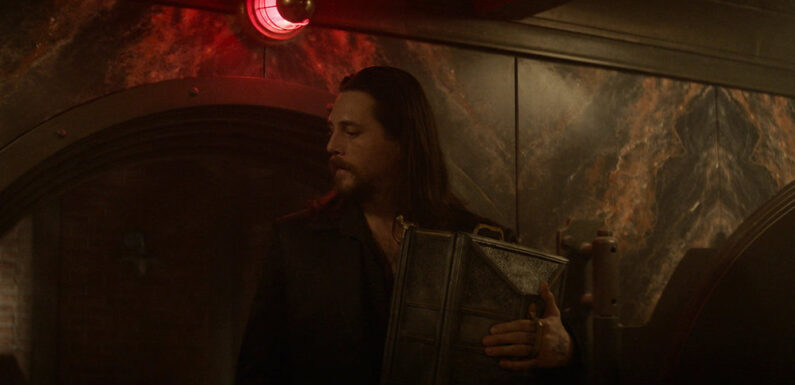
The “John Wick” movies are known for their high-octane, guns-blazing action on the big screen, but now the franchise is heading to Peacock — and about 50 years in the past — to explore its origins in “The Continental.”
Across three episodes, the ’70s-set series dives into how a young Winston Scott (played by Colin Woodell) became the proprietor of the titular hotel, which is famous for throwing lavish parties and being a safe haven for assassins. But, as “John Wick” fans know, not everybody abides by the no-killing rule on Continental grounds.
The show, which premieres on Peacock Friday, starts with a bang — actually, a lot of them — thanks to stunt coordinator Larnell Stovall. Winston’s brother Frankie (Ben Robson) brutally kills a squad of henchmen while escaping The Continental with a stolen package. His exit route is up a crowded stairwell that soon drips with blood from the flurry of headshots and stabbings.
“We looked at multiple stairwells and found one that worked perfectly. The Budapest team and the U.S. team got back together at the gym and created our own version,” Stovall tells Variety. “We designed it, how many levels it’s going to be, how long the sequence is going to be, and we do our best make it exact.”
When planning the scene, Stovall had to make sure the stairwell could comfortably fit multiple fighters and that the camera could move nimbly around Robson’s 6-foot 4-inch frame to capture all of the bloody action.
“We wanted to create tension, drama, pressure, guys coming from up the stairs, guys coming from down the steps,” Stovall says. “It felt like ants coming at him and you didn’t know how he was going to make his way out of it.”
Everything had to be precisely coordinated because Stovall and the “Continental” team were shooting a film-level fight scene on a TV schedule. The entire stairwell scene ended up taking only one day to film.
“Our quality is a feature film, but our schedule was similar to a TV schedule,” Stovall says. “Some of the fight scenes in ‘John Wick’ may have three to five days to shoot that sequence. In TV, we have one day. You have to be very smart in how you design the action sequence because you don’t know if you’re ever gonna be able to go back and film again or have that location again. We nailed it. It was the first big one to let our audience know, ‘This is who we are and this is the type of action you can expect.’”
Read More About:
Source: Read Full Article